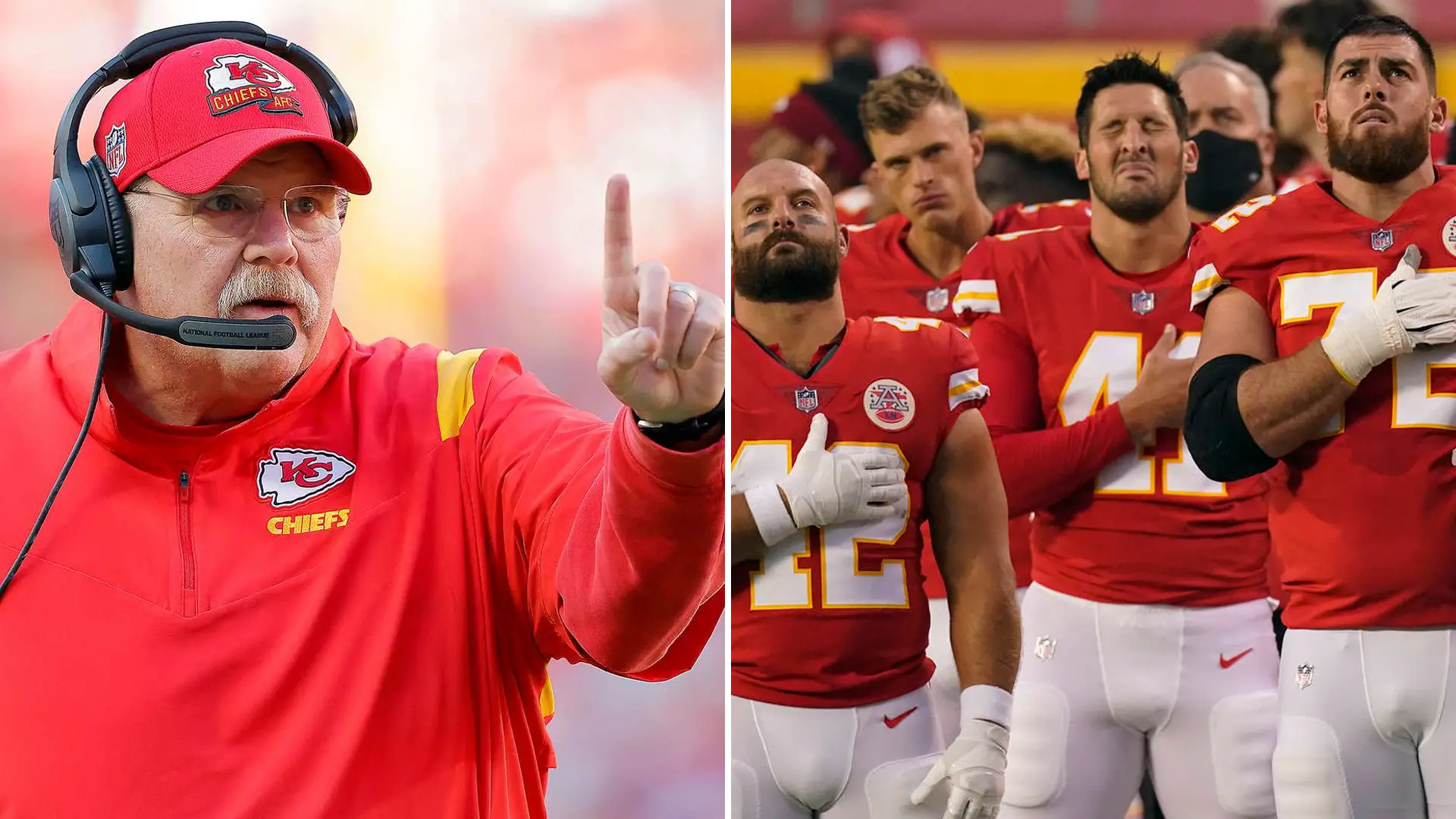
When the powerful strains of the National Anthem soared through the vibrant, expectant air in the packed stadium, a palpable tension threaded through the crowd, players, and millions of viewers glued to their screens. The Kansas City Chiefs, a football team renowned as much for their on-field prowess as their off-field unity and camaraderie, collectively made a decision that would thrust them into the spotlight for reasons that extended far beyond their sporting talents. On this pivotal day, as debates around kneeling during the anthem continued to cascade through the NFL and the nation at large, the Chiefs made a unanimous decision: they would stand.
In the moments that the Chiefs chose to remain upright, the air seemed to pause, recognizing the sheer weight of this unanimous decision. This was not merely an act of defiance against the widespread movement initiated by Colin Kaepernick in 2016, but a statement that reflected a collective agreement, an understanding forged in the crucible of respect for diverse perspectives and thoughts among the team members.
As Travis Kelce, a renowned tight end for the Chiefs, echoed sentiments of unity and respect in the subsequent press meets, the landscape of debates around the kneeling movement shifted, now requiring a nuanced look at the various shades of convictions held by players and the implications thereof on team dynamics and public perception.
Understanding the Chiefs’ collective stance requires a rewind to the point where kneeling during the anthem evolved from being a personal protest to a symbol of resistance against racial injustice and police brutality. Kaepernick’s knee on the field became emblematic of a broader societal movement, drawing both sharp criticism and immense support from varied quarters.
In the wake of the movement’s resurgence in subsequent seasons, the narrative was revisited and reevaluated within locker rooms across the league, opening spaces for dialogues that transcended sports, delving into the personal experiences and beliefs of players and staff alike.
Back to the charged atmosphere in the stadium, as each player of the Chiefs stood, hand on heart, eyes possibly reflecting a maelstrom of emotions and thoughts, it was clear that this was more than a mere act of contrarian symbolism. Conversations that unfolded behind the scenes, away from the prying eyes of cameras and the public, had culminated in this moment of united stand.
In these dialogues, respect was the pervasive theme – respect for individual beliefs, personal experiences, and the collective identity of the team. Travis Kelce and Coach Andy Reid, among others, became vocal advocates for an environment where every voice, irrespective of its pitch in the collective chorus, was heard and valued.
The unanimous stance taken by the Chiefs elicited a whirlwind of responses, turning social media into a battlefield of ideologies, where praises and criticisms were fired with equal fervor. Amidst the cacophony, the Chiefs remained stoic, their decision emanating from a place of mutual respect and unity within the team.
While critics argued that the stand downplayed the struggles against racial injustice, others saw it as a team choosing their path to express unity, one that didn’t conform to prevalent narratives yet was potent in its message.
As the waves created by the Chiefs’ decision rippled across the NFL, other teams found themselves navigating through the treacherous waters of collective identity, personal beliefs, and public expectations. The act of standing or kneeling during the anthem was no longer seen in binary but recognized for its various shades, each reflecting the multiplicities that exist within a team and the league.
The Chiefs had inadvertently nudged the NFL towards a broader dialogue, one that recognized the kneeling movement’s significance while also creating space for alternative narratives to coexist without negating the other.
The Kansas City Chiefs, through their decision to stand, have enkindled a discourse that recognizes the complexity and diversity of thoughts, experiences, and beliefs within a collective. The stand, deeply rooted in internal conversations and respect for varied perspectives, has not only affected the dynamics within the NFL but also extended its reach into societal dialogues, emphasizing that unity can indeed be forged amidst diversity, and respect can be extended to varied expressions of beliefs and thoughts.